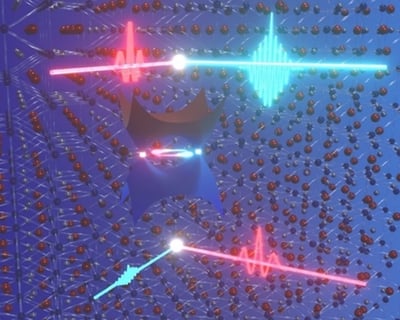2024-03-14 プリンストン大学
<関連情報>
- https://engineering.princeton.edu/news/2024/03/14/engineers-use-moisture-pull-carbon-dioxide-out-air
- https://pubs.acs.org/doi/10.1021/acs.estlett.3c00712
水蒸気スイング直接空気捕集における閉じ込め効果 Confinement Effects on Moisture-Swing Direct Air Capture
Yaguang Zhu, Austin Booth, and Kelsey B. Hatzell
Environmental Science & Technology Letters Published:January 10, 2024
DOI:https://doi.org/10.1021/acs.estlett.3c00712
Abstract

Direct air capture technologies are energy intensive and often utilize pressure and temperature swings for sorbent regeneration. An alternative approach, called moisture-swing direct air capture, relies on the hydrolysis of a confined anion to produce hydroxide anions. These hydroxide anions are active sites for CO2 capture. Here, we examine how confinement affects moisture-swing CO2 capture and regeneration mechanisms. The local short-range order in micropores determines the capacity for hydroxide formation in the moisture-controlled reversible hydrolysis/neutralization reaction during capture and regeneration. Carbon capture scales with the basicity of the confined anion. Sulfide exhibits excessive interactions with water and thus can release only small amounts of CO2 during the regeneration step. Control over local water–anion chemical microenvironments is critical for reversible operation of moisture-swing sorbent materials. Accessibility of water is largely governed by the distribution of resin macropores. Engineering materials for control over micro, meso, and macropores is critical for achieving favorable interactions between active sites and water in confinement.



